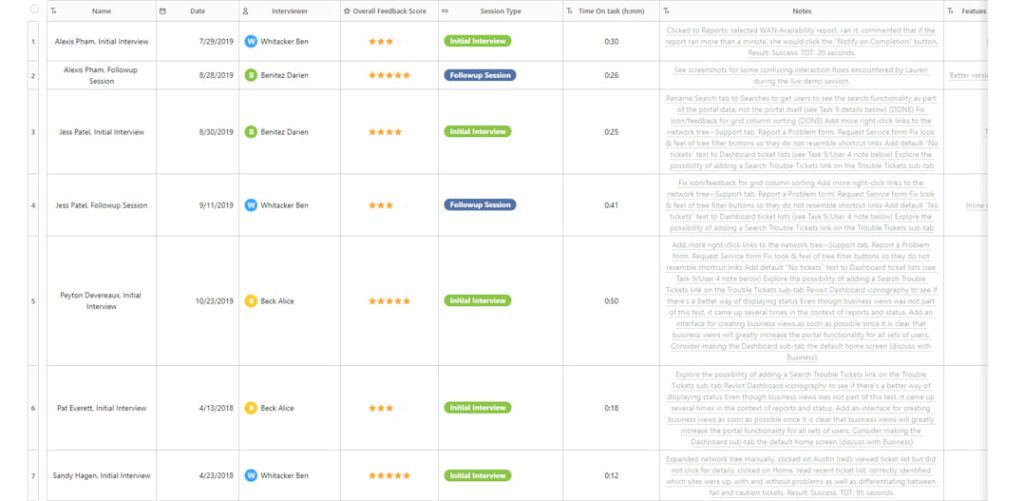
Knowledge Sharing Best Practices: An Ultimate Guide
- February 2, 2023
- 10 Min read
Knowledge is power in today’s world, and knowledge sharing is a critical component of any organization’s success. It allows for the free flow of information and ideas between employees, leading to increased productivity, innovation, and overall performance. This article will explore the best practices of knowledge sharing and management in an organization and the benefits it can bring. First, we will discuss how a culture of collaboration and teamwork can be fostered through knowledge sharing. Next, we will look at how technology can be utilized to improve communication and productivity. We will also overview the steps for implementing a successful knowledge-sharing system and strategies for measuring its effectiveness. Ultimately, this article aims to highlight the importance of knowledge sharing and its potential to drive organizational success as well as reveal the best practices for building a strong knowledge-sharing and knowledge-creation culture within a team or organization.
What is Knowledge Sharing in the Business Context?
Knowledge sharing refers to the process of sharing valuable information, experiences, and expertise among team members. This can take place in a variety of ways, including formal training programs, informal conversations, and mentoring, as well as the use of technology, for example, collaboration tools. Knowledge sharing aims to make the most of the collective knowledge within an organization so that employees can work more effectively and efficiently and the organization can achieve its goals.
Knowledge sharing best practices help organizations create a knowledge-based culture, where the employees feel encouraged to share their knowledge and learn from their peers. This kind of company culture allows for the flow of information and ideas between team members, increasing productivity, innovation, and better performance. Additionally, knowledge-management activities providing employees with the capability to learn from one another can help them improve their skills and advance their careers.
There are various types of knowledge that can be shared in an organization, such as technical knowledge, business knowledge, and effective practices. Overall, knowledge sharing is a vital activity that can help organizations to achieve their goals and remain competitive in today’s fast-paced business environment.
Benefits of Knowledge Sharing in the Organization
Knowledge sharing is vital for the success of an organization as it allows for the flow of information and ideas between employees and helps in creating a culture of collaboration and teamwork, improving communication and decision-making, enhancing learning and development, and strengthening relationships and trust.
Increased productivity
When new hires have instant access to the knowledge and resources they need, they can work more efficiently from day one.
Innovation
Sharing knowledge allows for the exchange of new ideas and perspectives, which can lead to breakthroughs and innovation and prevent the loss of valuable knowledge and expertise, known as brain drain.
Improved decision-making

When a team member engages in gathering information from subject matter experts, they can make more informed and accurate decisions.
Enhanced learning and development
Knowledge sharing habits allow employees to learn from each other, which can help them improve their skills and advance their careers.
Better problem-solving
When team members exchange their knowledge and experiences, they can more easily identify and solve problems, as well as fill in knowledge gaps and stay updated with the latest trends and best practices in their field.
Stronger relationships and trust
By transferring knowledge and information, not only experienced employees but also new hires, can build stronger relationships and promote psychological safety.
Improved competitiveness
Organizations that effectively share knowledge are better equipped to adapt to real-world problems and changes, and thus remain competitive in the marketplace.
Better customer service
Knowledge exchange among team members can lead to a better understanding of customer needs and more effective service.
Reduced costs
By sharing knowledge, organizations can reduce the time and resources required to acquire new information and also benefit from the proficiency of experienced workers.
Superior access to expertise
When employees spend time sharing knowledge during team meetings, it leads to a stronger sense of team cohesion and better access to the expertise and skills of the entire team.
How to Build a Knowledge Sharing Culture: 8 Tips&Tricks
Building a shared knowledge culture in an organization involves creating an environment where employees, including remote workers, feel encouraged and empowered to work together and share knowledge. This can be achieved through various means – let’s overview the best practices and methods of knowledge sharing.
1. Encouraging open internal communication: Creating channels for employees to share ideas, ask questions, and provide feedback can help to promote a knowledge-sharing culture.
2. Fostering teamwork: By encouraging employees to work together on projects and initiatives, organizations can build a culture of collaboration.
3. Rewarding collaboration and giving public recognition: By recognizing and rewarding employees for working together effectively, organizations can encourage more collaboration.
4. Providing opportunities for learning and development: Offering training and development opportunities and disseminating lessons learned from past projects, employers help their employees improve their skills and avoid the same mistakes, and, as a result, work more effectively.
5. Promoting a positive work environment: Organizations can encourage team members to collaborate and share knowledge by creating a positive and supportive work environment.
6. Implementing a knowledge management system: Having a central hub where employees can share and access knowledge can promote a culture of collaboration and make sharing knowledge easier.

7. Encouraging diversity and inclusivity: By valuing diversity and creating an inclusive environment, organizations can promote an organization’s culture where different perspectives and ideas are valued.
8. Lead by example: Managers and leaders play a crucial role in setting an example for collaboration and encouraging other employees to work together.
Creating a knowledge-sharing culture can help companies achieve their goals by leveraging the collective knowledge and expertise of employees.
Role of Technology in Knowledge Sharing
Technology plays a significant role in building knowledge sharing by providing tools and platforms for creating, organizing, and disseminating valuable information. Examples include online collaboration tools such as Google Docs, Slack, FuseBase , knowledge management systems like Confluence and SharePoint, social media platforms like LinkedIn and Twitter, and knowledge bases or knowledge-storage systems like Zendesk and Document360. These tools make it easier for individuals and different teams to share information, collaborate on projects, and access a wide range of resources. Overall, technology is a key enabler of knowledge hoarding, knowledge sharing and collaboration, and organizations that adopt both knowledge sharing best practices and the appropriate technology will be more capable of reaching their objectives.
Building knowledge sharing with FuseBase

The FuseBase is a cloud-based knowledge management system with dedicated space for storing knowledge that can be used to facilitate knowledge storage sharing within an organization.
- Document management: FuseBase allows users to create, edit, and share documents, such as reports, procedures, and policies, in a centralized repository. A well-developed knowledge base makes it easy for employees to store knowledge, access the information they need and stay up-to-date with the latest versions of important documents.
- Search: FuseBase has a powerful search feature that allows users to quickly find the information they need.
- Collaboration: FuseBase boasts ultimate collaboration tools such as client portals, discussion boards, and dedicated virtual spaces, which allow a whole team to work together on projects and share knowledge in real time.
- Workflows and approval: The platform allows you to create custom workflows and approvals, which can be used to ensure that know-how information is accurate and up-to-date, and can be used to manage projects effectively.
Empower your company’s knowledge sharing with FuseBase!
One feature of the FuseBase that stands out and should be mentioned in the context of knowledge management is the FuseBase knowledge base. This allows users to store and organize a wide variety of content, such as articles, procedures, FAQs, and best practices, and is valuable for organizations looking to improve their knowledge sharing and collaboration efforts. Knowledge bases can be used for internal teams, customer self-service, and also as public-facing knowledge portals.
How to Implement a Knowledge-Sharing System
Implementing a knowledge-sharing system can be a complex process, but it can be broken down into several key steps:
- Define the scope and objectives: Identify the specific areas of knowledge that need to be shared, as well as the system’s goals.
- Assess current knowledge: Conduct a knowledge audit to assess the current state of knowledge within the entire organization, including what information is available, who has it, and where it is stored.
- Identify the right technology: Choose effective knowledge-sharing tools that meet the organization’s needs. This could include a document management system, a social media platform, or a collaboration tool like the one we mentioned earlier – FuseBase .
- Create and organize content: Develop and organize content, such as procedures, policies, and best practices, in a way that is easy to find and use.
- Train team members: Provide training to employees on how to use the knowledge-sharing system and contribute to it.
- Encourage participation: Create incentives – recognition, rewards, or career development opportunities – for new employees to share their knowledge and participate in the system.
- Monitor and evaluate: Monitor the system’s performance and effectiveness to ensure that it meets its objectives.
- Keep it up to date: Regularly update the knowledge-sharing system and encourage employees to keep their contributions up to date.

Measuring the Success of Knowledge Management
Measuring the business success of knowledge sharing in an organization can be challenging, but several key metrics can be used to evaluate the effectiveness of a knowledge sharing strategy:
- Usage and employee engagement: Track the number of users accessing the knowledge-sharing system and the frequency of use. This can provide insight into how actively the system is being used and how engaged employees are with it.
- Search success rate: Measure the percentage of successful searches on the knowledge-sharing system. A high success rate indicates that employees find relevant information quickly and easily.
- Time savings: Track the amount of time employees spend searching the knowledge management system instead of other methods (e.g. email, asking colleagues)
- Quality of contributions: Measure the quality of contributions to the knowledge-sharing system, such as the accuracy and relevance of the information provided.
- Employee happiness and satisfaction: Conduct surveys to measure employees’ satisfaction with the knowledge-sharing system and related business processes, and gather feedback on how it can be improved.
- ROI: Calculate the return on investment (ROI) of the knowledge-sharing system by comparing the cost of the system to the benefits it provides.
- Business impact: Measure the impact of knowledge sharing on the organization’s overall performance, such as increased revenue, improved customer satisfaction, or reduced costs.
By monitoring these metrics of knowledge-sharing activities, organizations can gain insight into the effectiveness of their knowledge sharing methods and strategy and make adjustments to improve their performance.
Conclusion
In today’s fast-paced business environment, knowledge is a business’ most important asset. Thus, knowledge sharing is more important than ever. Organizations that are able to effectively share important knowledge and collaborate are better prepared to innovate, make more balanced decisions, and stay competitive. The best practices for knowledge sharing involve the wide usage of relevant knowledge management tools, such as FuseBase , providing a range of advanced tools to help organizations achieve their knowledge sharing and collaboration goals. FuseBase Super documents, FuseBase , Nimbus Capture, and other powerful features and mini-tools will allow you to streamline the document management process and improve teamwork with minimal costs. Building an effective knowledge-sharing system has never been easier!
Visit the FuseBase Twitter page for the latest news and updates!
Found it useful? Share the article with your community
Subscribe to our blog!
Get weekly tips and insights on how to grow your business